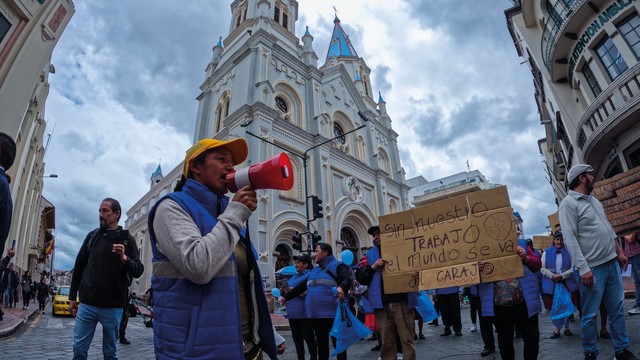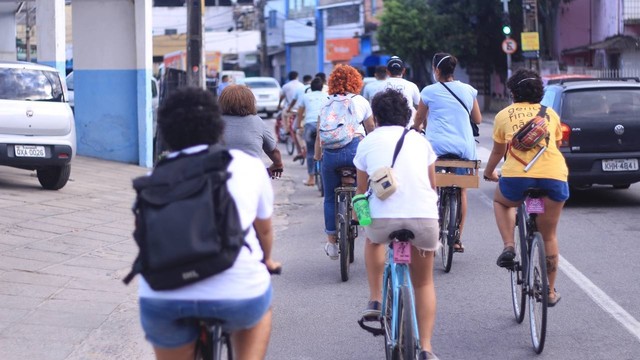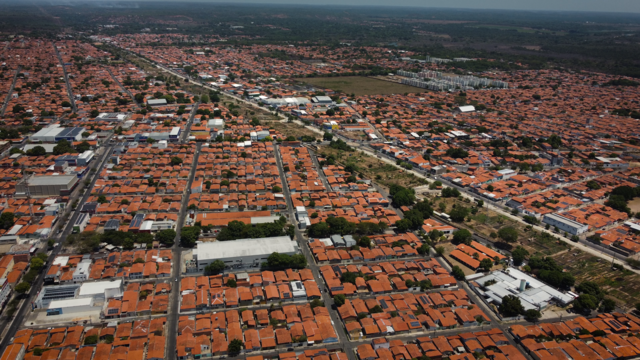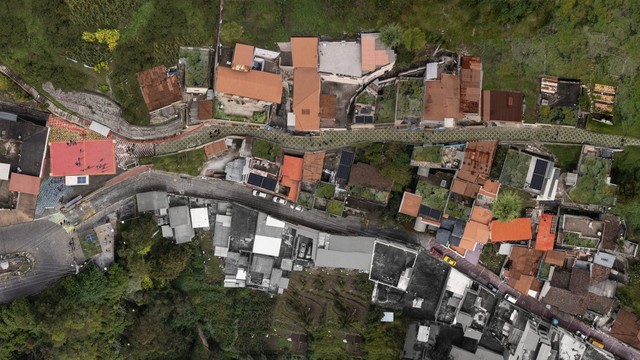São Paulo: how social movements are advancing housing rights while decarbonising the city
Social movements and civil society organisations have long been mobilising to defend housing rights and improve access to decent housing for marginalised communities in Brazil’s largest city. These initiatives are now being combined with efforts to decarbonise the city and reduce pollution to make city spaces more just and sustainable.

A building in downtown São Paulo (Photo: Wilfredorrh, via Flickr, CC BY-NC-ND 2.0 DEED)
The greater metropolitan area of São Paulo is one of the ten largest metropolitan areas in the world, with an estimated population of 21 million. As the largest city in Brazil and the capital of the state of São Paulo, it has political, economic and cultural significance nationally, regionally and globally.
São Paulo has been at the centre of an intense and ongoing struggle over the values that drive decisions about land and city-making processes.
On the one hand, the state and powerful market actors promote the city as an engine of economic growth, which has led to an agenda that focuses on privatisation of the ownership and management of public utility services and spaces in the city.
On the other hand, a well-established and active civil society network focusing on the right to adequate housing and the right to the city has pushed to bring about change and set important precedents. It has mobilised to protect the social function of land and property, to implement community-led housing initiatives at scale, and to upgrade informal settlements.
It is this scenario of contestation that makes São Paulo an important frontrunner city: a city with deeply unequal, polluting, speculative and profit-led urbanisation processes, which has also made significant locally led progress towards creating a more just and sustainable city.
Three collective strategies
Social movements in São Paulo have worked for decades to promote collective forms of housing production, focusing on people and nature, and contesting speculative forms of urban development that prioritise profit generation over housing rights.
More recently, they have engaged with decarbonisation initiatives as a strategic aspect of their wider work on social justice and housing rights, promoting community-led housing as an opportunity to address the twin challenges of inequality and climate change. In this context, community-led housing is becoming strategic for wider efforts to protect the ’commons’ and renature the city.
This city profile reflects on ongoing housing initiatives led by the São Paulo alliance of housing movements ‘União dos Movimentos por Moradia’ (UNIÃO), whose environmental strategies have helped to advance collective forms of housing that promote social justice and contest housing speculation and exclusion. It focuses on three collective strategies:
- Protecting and conserving the environment, to strengthen environmental systems while improving living conditions and securing self-managed housing projects
- Prioritising location, to tackle broader unsustainable urban development patterns, while providing well-located housing solutions to structurally marginalised groups, and
- Optimising use of resources, to promote clean energy and sustainable materials while reducing living costs for local residents.
These strategies are part of the range of efforts led by social movements in Brazil working with, through, or in spite of public institutions and the state. By looking at these strategies together, we aim to examine the ways in which social movements' actions are opening up the debate about just and sustainable urban development at different scales.
Evaniza Rodrigues, União dos Movimentos de Moradia, São PauloAutogestão [self-management] is a key strategy to improve the quality and size of social housing, while also opening up opportunities to improve environmental conditions and the quality of life of people
Below we discuss each of these strategies, and reflect on their capacity to advance the intersection of housing justice and decarbonisation. These experiences were documented during a fieldwork visit to São Paulo in February-March 2023 as part of an ongoing collaboration between IIED, UNIÃO, and the Laboratório Justiça Territorial (LabJUTA) of the Universidade Federal do ABC (UFABC).
1. Protecting and conserving the environment: improving quality of life for low-income residents
The city of São Paulo has a long and rich history of autogestão (in Portuguese) – housing self-management. Since the early 1980s it has played a critical role in integrating social and environmental concerns within collective decision-making processes in housing production.
Autogestão is a form of housing in which residents have control over the planning, construction, maintenance and management of their housing. This can be done in various ways, such as through cooperatives, community land trusts and mutual housing associations.
Since the first self-managed housing programmes in São Paulo were launched in 1989, housing social movements (PDF in Portuguese) have developed expertise in integrating collective practices into housing production.
Instead of prioritising profit, autogestão creates the conditions for decisions to be driven by the values associated with the quality of the housing project. This has resulted in, for example, housing units around 30% larger than the statutory minimum.
These processes have enabled potential residents to negotiate and address contentious issues about affordability, density, quality of construction material, and environmental sustainability.
Representatives of social movements and their technical allies suggest that in recent housing developments under Minha Casa Minha Vida (MCMV – Brazil’s national programme aimed at providing access to housing for low-income residents), in São Paulo, self-management initiatives have been better at protecting the environment than initiatives led by private developers.
MCMV guidelines require housing projects to protect certain environmental areas (areas of permanent protection - APPs) and replant trees when necessary. The guidelines state reforestation does not need to take place within the perimeters of the housing developments.
Consequently, private developers have often prioritised maximising the use of the land within housing developments and replanting trees in other parts of the city. Meanwhile, autogestão initiatives have often led to reforestation within housing developments, reducing density and improving quality of life for residents.
For example, the Barra do Jacaré estate in northwest São Paulo, which was completed in 2019, includes 592 units and a nature reserve that serves the community as well as being an APP. A similar process is taking place in Alexios Jafet, where an autogestão estate with 1,104 apartments is currently under construction, which has its own nature reserve.
With the expansion of these kinds of initiatives among autogestão (in Portuguese) housing projects, UNIÃO has developed a programme to establish community tree nurseries, which are managed by groups of residents, to supply native trees for in-situ reforestation initiatives.
These important environmental initiatives ensure the supply of trees and plants for housing developments to meet their reforestation targets, while providing a source of income for residents.
Further research is needed to quantify the environmental and social benefits of these collective initiatives compared to other forms of housing production.

Left: An aerial view of the Barra do Jacaré estate in northwest São Paulo, as shown via Google Maps, with the area of permanent protection marked in green, and a high-density housing estate built by a private developer in blue. Right: Barra do Jacaré (Camila Cocina, IIED)
2. Prioritising location: well-located housing for more sustainable and just cities
Accessing and securing well-located land has been a key priority for urban housing movements, especially in large cities like São Paulo, where vast urban areas have been systematically excluded from infrastructure development opportunities.
Likewise, decarbonisation debates have highlighted the crucial need to shift away from development patterns that promote carbon-intensive urban expansion and generate dependency on fossil fuels.
Urban sprawl can lead to increased emissions due to transportation and infrastructure construction, while also potentially leading to water contamination and deforestation. At the same time, research demonstrates that relocation to peripheries has negative impacts on income and on transport expenditure (see examples from Buenos Aires and Mexico City).
A study (PDF in Spanish) by the Inter-American Development Bank shows that, average household expenditure on items such as transport and other services in Brazil can be as much as 45% higher for households in city peripheries than those in central areas.
Housing relocation tends to be less sustainable than in-situ improvement programmes, while also worsening the social and economic conditions of those displaced.
The occupation of empty buildings in central São Paulo is a longstanding practice used by housing movements to reclaim the social function of well-located buildings and exercise their right to housing.
In recent years, housing groups have developed projects to improve and regularise and secure tenancy of occupied buildings in the central district of São Paulo through retrofit initiatives. These projects have taken place under the umbrella of the Minha Casa Minha Vida Entidades programme, which has supported the development of autogestão housing projects led by social movements in collaboration with technical advisors.
There are several examples of both retrofit projects and new housing construction projects on well-located occupied land. An example of the former is the Edificio Dandara, in central São Paulo, an autogestão housing project that refurbished an empty and previously occupied building to provide 120 housing units.
An example of the latter is the Maria Domitila estate (PDF in Portuguese), an autogestão project that included a new building with 245 apartments on a well-located previously occupied land.
Beyond the retrofit and new housing projects, promoting in-situ improvement programmes as a way to prioritise location has also been a key strategy of social movements, which has led to efforts to stop evictions.
For example, the Despejo Zero (in Portuguese) (Zero Evictions) campaign was a nationwide initiative launched in June 2020 by social movements to address the insecurity experienced by the most vulnerable families.

Edificio Dandara, an autogestão retrofit project in central São Paulo (Photo: Camila Cociña, IIED)
3. Optimising use of resources: towards reduced costs and energy justice
A third collective strategy of social movements is the optimisation of resources, to promote clean energy and more sustainable use of materials, while also reducing living costs and expenses for social housing residents.
Building construction contributes to nearly 40% of global carbon emissions. Research in low-income settlements shows that implementing healthy, low-cost energy efficiency initiatives (PDF) has not only reduced electricity consumption and CO2 emissions but has also translated into substantial annual savings for communities.
Recognising this nexus, housing movements and their allies are promoting an ‘energy justice’ agenda (in Portuguese).
Currently, Instituto Polis is working with the organised community of an emblematic autogestão housing project in east São Paulo, called Mutirão Paulo Freire, to install photovoltaic panels to enable energy autonomy for the residents.
Built in 1998, Mutirão Paulo Freire, is emblematic not only because through a process of self-management it provided housing for 100 families, but also for its innovative use of construction materials and architectural design. Today, 25 years on, this same community is innovating on issues related to energy and the circular economy.
The installation of photovoltaic panels aims to reduce dependency on grid energy supply, while also making energy cheaper for the community.
It will also bring other benefits such as increased food security – given that 22% of Brazilian households claim they have had to reduce their expenditure on basic food in order to pay their electricity bills. This has been developed as a collective autogestão project, which has strengthened the community’s organisational capacities.
This experience feeds into wider efforts led by housing social movements and the technical advisors working with them, who are constantly looking for ways to innovate with construction materials and resources to make housing more affordable and sustainable.

Paulo Freire estate (Photo: Alexandre Apsan Frediani, IIED)
Looking ahead: challenges and recommendations
The strategies summarised above demonstrate the key role housing social movements and their networks have played in integrating sustainability into efforts to advance social justice in São Paulo.
Outlined below is what is needed to address the main challenges identified by UNIAO and their technical assistance partners to scale up efforts to achieve social justice and decarbonisation in housing production in Sao Paulo.
- Mechanisms to maintain the non-speculative nature of housing projects beyond their production phase and preserve their long-term social and ecological function
- Recognition of grassroots technological innovations that provide alternatives to highly commodified and exclusionary technologies
- A shift across the whole construction industry to transition to more sustainable and affordable use of resources in housing production
- Capacity strengthening of local government officials, transforming institutional culture, improving regulations, guidelines and investment priorities to enable government to respond to social movements’ priorities, and
- Prioritising environmental action and recognising the role of social movements in advancing sustainability as a critical pathway to address poverty and inequality.
Further reading
- No climate justice without housing justice, Alexandre Apsan Frediani (2022)
- Tarifa social de energia elétrica, essa política pública também é para mim? (PDF) Instituto Polis
- Justiça energética nas ciddades brasileiras, o que se reivindica? Instituto Polis
- Cartilha de autogestão em habitação (PDF), União Nacional por Moradia Popular
- Video: Autogestão, Já!, UMM São Paulo (2020)
- Empreendimentos da União Nacional por Moradia Popular no Programa Minha Casa Minha Vida (PDF), União Nacional por Moradia Popular
Authors

Camila Cociña (camila.cocina@iied.org), researcher in IIED’s Human Settlements research group

Alexandre Apsan Frediani (alexandre.frediani@iied.org), principal researcher in IIED’s Human Settlements research group
Frontrunner cities forms part of the Transformative Urban Coalitions (TUC) project, funded by Germany's Federal Ministry of Economic Affairs and Climate Action



